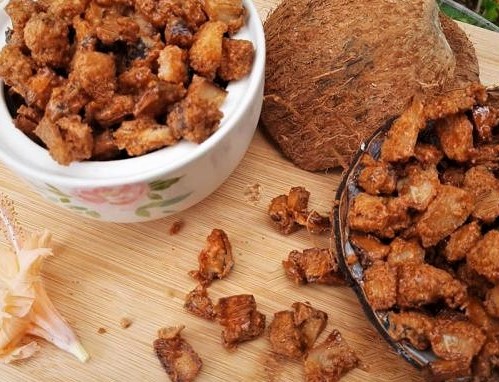Burnt Coconut Recipe

Hello there, welcome to Special Food Meals! That is the place I share my ardour for cooking with the world. Nice cooking is about being impressed by the easy issues around you - recent markets, varied spices. It would not essentially look fancy. Spice is life. It relies upon what you want... have enjoyable with it. Sure, meals are severe, however, it is best to have enjoyable with it.

The preparation of canned peaches is a family ritual to which we have dedicated ourselves for generations. Too often modernity distracts us from traditions, but in the case of peaches in syrup, goodness and sweetness are a good incentive to perseverance! When in summer the peaches are in season and maybe we have the opportunity to draw directly from the tree, we like to make a nice load, collect more than necessary and work some with the syrup and sugar (so as to make them last in the following months).
These peaches are a real resource for our pantry! We can eat them simply, by extracting them from the syrup or use them for other recipes and preparations. As with any home preserves, however, certain precautions regarding the sterilization rules are indispensable. We strongly recommend that you follow these instructions in detail to sterilize the airtight cans, so as not to run into the botulinum which can be really dangerous.
Obviously, peaches in syrup are delicious and delicious also to be enjoyed independently, however it is in the preparation of desserts that we can make the most of them. First of all, we remind you, the preserves syrup itself is an excellent liquid to be used as a sponge cake. Peaches in syrup are beautiful and tasty decorations to be used as toppings for cheesecakes, cakes and various compositions.
You can also enjoy peaches with doughnuts or panna cotta and yoghurt cakes or to make walnut and peach-nut cakes, even out of season.
You may be interested to read: spicy tuna couscous Recipe/ sago cookies recipe.
The best peaches in syrup, the sweetest and most consistent, are undoubtedly those obtained with peaches of the persona type. But we do not all have the same tastes, in fact, many use the common yellow-paste peaches to obtain softer peaches in syrup because they are already more tender at the start. In any case, you must carefully select ripe and whole fruits.
But the flavour does not depend solely on the fruit chosen, we can flavour peaches as desired. Cinnamon, cloves, lemon or star anise are the most appreciable aromas in combination with peaches of this type but you can have fun and experiment.
1 kg of yellow peaches
1 litre of water
450 g of granulated sugar
1/2 lemon
Indispensable for canned peaches, as well as for any other preserves, are duly sterilized airtight jars. Wash the peaches thoroughly and put them in a pot with plenty of boiling water, to scald them. It will take about 2 minutes to make them soften a little. Then drain them and pass them under running water so as to cool them quickly. Peel the peaches and cut them in half, so as to easily remove the core. Place the peaches in the sterilized jars, taking care to leave at least 1 cm and a half of space from the closing edge. Devote yourself to the preparation of the syrup by boiling water, sugar and the juice of half a lemon. Heat everything over low heat and let it boil for about 2-3 minutes until the sugar has completely dissolved.
Pour the syrup into the jars with peaches, but always leave 1 cm free. Insert a plastic presser to keep the peaches pressed and close the jars, not squeezing them excessively. Boil water and put the jars full of fish to soak so that the vacuum can be created. After this operation, wait for the jars to cool down and check that everything went correctly by pressing the cap with your finger. If you feel it under pressure, and therefore it will not do the classic "click-clack", then the pasteurization operation will have taken place successfully and you can keep the peaches in syrup for up to 3 months.
Always check that the ingredients you use for the preparation of your recipes are suitable for coeliacs and people sensitive to gluten. Check the barred ear, the presence on the Association of European Coeliac Societies (AOECS) or the indications on the manufacturer's label.
From the ministerial note: The word "delactosate" has been eliminated, as previously associated with the word "dietetic". The term lactose-free may be used instead for dairy products and for milk with a lactose content of less than 0.1 g per 100 g or ml
Whether you are intolerant to food nickel, allergic to contact nickel or have been diagnosed with you SNAS there is no definitive cure and there is no way to eliminate this metal from a person's life. To alleviate the symptoms it is necessary to follow a low nickel rotating diet and observe all the rules relating to cosmetics, detergents, pots and pans, suitable clothing etc.
Comments
Post a Comment